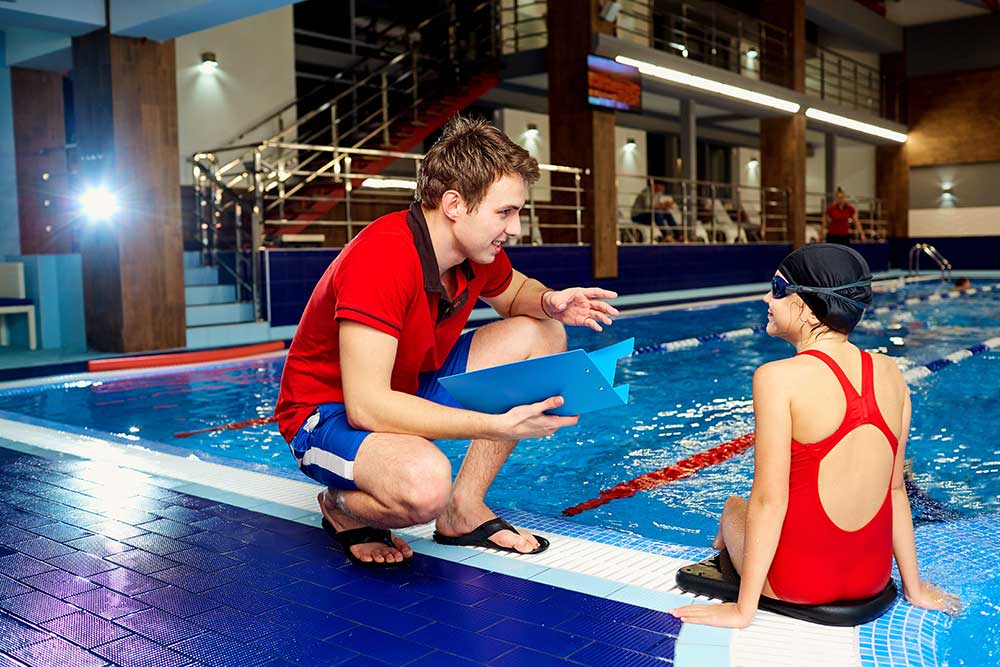Disclaimer: The information on our website is provided for general information purposes only. We make no representations or warranties of any kind, express or implied, about the completeness, accuracy, reliability, suitability or availability with respect to the website or the information contained on our website for any purpose. Any reliance on such information is therefore strictly at your own risk and we are not liable for any damages or losses arising out of or resulting from your reliance on any information contained on our website.
An athletic trainer works for an athlete or team to keep athletes in prime shape for peak performance. Along with giving personalized workouts, these trainers also help their clients recover quickly after a game or a training session. How an athlete can recover is just as important as the training as they want their clients to avoid injury.
Watch a video to learn what an athletic trainer does:
How to Become an Athletic Trainer
Education is a significant difference between a personal trainer and an athletic trainer as most personal trainers hold certifications. This is why these professionals must complete an accredited program in athletic training to be able to sit for an exam called the BOC (Board of Certification) exam. Because states regulate the practice of athletic training, passing this exam meets the necessary requirements to legally practice. Also, requirements needed to sit for the BOC exam are outlined on the Board of Certification for the Athletic Trainer website.
Job Description of an Athletic Trainer

Being an athletic trainer comes with several benefits, including the opportunity to work closely with athletes, help in injury prevention and recovery, and contribute to overall sports performance. It offers a rewarding career path for those passionate about sports and healthcare.
Along with ensuring the athletes in their care are in shape to perform, athletic trainers also play a major role in injury prevention. They ensure their client is taking appropriate preventive measures by applying items like bandages or tape to areas of concern. If their athlete becomes injured, they would also work with physical therapists to ensure their rehabilitation is as successful as possible. In addition, they would monitor their client’s progress and try to prevent future injuries from occurring.
Free Teacher and Student Resources
The BOC website offers a host of posts that any person interested in exploring athletic training as a career would find helpful. For example, two such posts include what it’s like to be an athletic trainer in the military and an interview with an assistant athletic trainer for the Major League Baseball League. Also, you can learn more about what a day in the life of a trainer by reading an interview titled In Depth Look: Athletic Trainer for World Wrestling Entertainment. In this interview, Tara Halaby (Physical Therapist and Athletic Trainer) discusses her career as an Athletic Trainer for World Wrestling Entertainment (WWE).
Athletic Trainer Career Video Transcript
One of the key players on any sports team never takes the field. Athletic trainers work in the background to keep players in top shape. The most important part of this job is helping athletes prevent and recover from sports injuries. Working closely with team doctors, trainers wrap injuries and supervise physical therapy.
Trainers spend a lot of time in gyms and locker rooms, as well as on the road traveling to sporting events. They study practice sessions and provide individualized exercise routines for athletes to improve their performance. Game times are usually at night, on weekends, or holidays. A trainer might need to find other employment during the off-season. Athletic trainers work with athletes in a wide variety of settings: colleges and universities, high schools, clinics, hospitals, the military and law enforcement, as well as the performing arts. The highest-profile jobs are with professional teams.
A love of sports is a good starting point, but a master’s degree in athletic training, sports medicine, physical education or a related field is usually required to enter the field. Many states require a professional license. No matter the setting or the sport, the greatest reward is helping athletes achieve their personal best.
Article Citations
Bureau of Labor Statistics, U.S. Department of Labor, Occupational Outlook Handbook, Athletic Trainers.
National Center for O*NET Development. 29-9091.00. O*NET OnLine.
The video is Public Domain from the U. S. Department of Labor, Employment and Training Administration.


